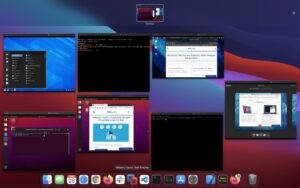
We are a Windows user, but we also have Windows instances in our ESXi infrastructure for accessing resources on different sites, or shared applications etc. Either terminal servers, virtual instances on their ESXi, HyperV Servers etc. The noisy minority always bubble up to the surface, but I wonder if there are any statistics about the number of Windows VMs running on Macs?Īnd business users have other options, today. It would be interesting to know what percentage of users actually use Windows VMs these days. No need to keep rebooting to jump back and forth. There hasn't been much of a need to "go native" for about a decade now.įusion or Parallels with Unity mode means that you can run the Windows software as if it were a native Mac application. Tagged with Apple M1, Parallels Desktop, Parallels Desktop 17 So I had been waiting to see a confirmation of that tip. What’s interesting about this is that I spoke to a source in late July who told me that they expected Microsoft to announce that it would formally support WOA on M1 Macs in September. Parallels has released a software update to address that problem, but it’s not yet clear whether it was a glitch or a purposeful move on Microsoft’s part to prevent Windows 11 from working on M1 Macs. To date, Parallels has supported ARM-based versions of Windows 10 and 11 only through the Windows Insider Program, which doesn’t provide any product support and requires regular upgrading.įurther troubling, it appears that the most recent Windows Insider builds of Windows 11 have started triggering hardware errors in Parallels on M1 Macs.

#Vmware fusion m1 x86 install
The software giant told The Register that running the ARM version of Windows 11 on M1-based Macs is not “a supported scenario,” ending speculation that Parallels Desktop customers would be able to purchase and install Windows 11 legally on those systems. Microsoft has finally gone on record about whether it will support Windows on Arm (WOA) on Apple’s M1 Macs.


 0 kommentar(er)
0 kommentar(er)
